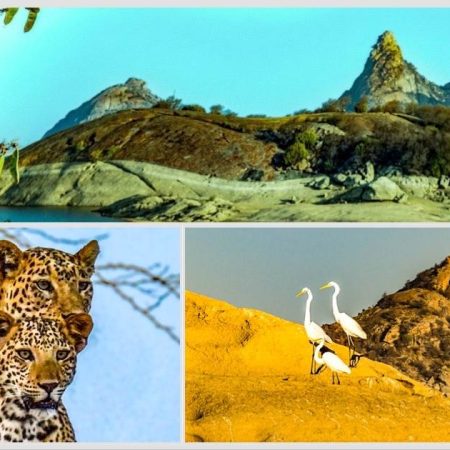India’s Best-Kept Wildlife Secret
Are you an avid wildlife enthusiast, a nature lover, or a passionate photography enthusiast yearning to capture the splendour of India’s remarkable wildlife? Look no further! Tadoba National Park is your ultimate destination. Nestled in the heart of Maharashtra, this hidden gem promises an enchanting experience for adventurers and nature enthusiasts alike. In this blog post, we will unveil the wonders of Tadoba National Park, and provide you with all the essentials to plan your visit.
How to Reach: Tadoba National Park boasts excellent connectivity, both by road and air. We opted for air travel and landed in Nagpur, just a short 140 kilometers away from the park. Arriving in the evening, we spent the night in Nagpur to prepare for our afternoon safari, scheduled for 3:30 PM. The following day, we arranged for a taxi from our hotel to kick-start our two-day stay at the Svasara Jungle Lodge.
Day 1 Evening: Our arrival at the Svasara Jungle Lodge around noon provided ample time to get ready for our first safari at 3:30 PM. Our excitement soared as we set up our cameras, we were accompanied by fellow photography enthusiasts, eagerly anticipating the adventure ahead.
As our knowledgeable naturalist guide explained, Tadoba National Park proudly stands as one of India’s premier wildlife destinations, covering an expansive 625 square kilometers. It is not only renowned for its majestic Bengal tigers that freely roam the dense jungles but also home to captivating creatures such as leopards, sloth bears, gaur, and crocodiles.
While our naturalist spoke, he suddenly exclaimed that Tigress Maya had vanished into the thickets. The thrill was palpable as numerous safari vehicles shifted in anticipation of her reappearance. In the scorching sun, we had the privilege of walking alongside the Tigress for approximately 700-800 meters while capturing the moment through our camera lenses. The air was filled with the click of cameras and the rustle of safari vehicles. It felt as though we had truly walked with the Queen of the Jungle, as she was featured in the Tiger anthem released in 2023.

Day 2 Morning: Our morning safari, commencing at 6:30 AM, was particularly enchanting. The forest came alive with the symphony of nature as the morning sun bathed the mist in a breathtaking display. In January, the mist and sunrays combined to create a stunning tableau.
To our astonishment, our driver guided us down a narrow, bushy path where we encountered another tigress with cubs. While the cubs swiftly disappeared into the undergrowth, she graciously allowed us ample time to capture her beauty through our camera lenses.

Day 2 Evening: Our evening safari was equally captivating as we witnessed deer basking in the warm sunlight. The park’s diverse landscapes and abundant wildlife provided endless opportunities for shutterbugs to hone their skills. The interplay of light and shadow gifted us with soothing imagery. However, exit times were slightly earlier due to the winter season, and occasional clouds veiled our view of this natural spectacle.
Day 3 Morning: Our morning safari revealed an unexpected spectacle – the jungle seemed to have its gathering, with deer and monkeys in harmonious company. We even spotted a Malabar Pied Hornbill, skilfully identified by our Naturalist thanks to its distinctive call. The Naturalist’s expertise in flora, fauna, and bird calls truly deserves commendation.

Safari Booking in Advance: Tadoba National Park offers both jeep and canter safaris, providing various options to explore its vast expanse. During your safari, experienced guides with an intimate knowledge of the park will accompany you. It’s important to note that safari bookings must be made in advance due to high demand.
Ensure you have the right equipment to make the most of your photography expedition. A telephoto lens is essential for capturing animals in their natural habitat, while a wide-angle lens can help you capture sweeping vistas of Tadoba National Park’s picturesque landscapes. Patience is the key to wildlife photography, so take your time, observe your surroundings, and wait for that perfect shot.
Tadoba National Park is indeed a hidden treasure in the world of Indian wildlife. With its awe-inspiring fauna, lush flora, and breathtaking landscapes, it offers travellers a unique and immersive experience. Whether you’re a devoted wildlife enthusiast, a passionate photographer, or simply someone seeking solace in nature, Tadoba will etch an indelible mark on your heart. So, pack your bags, grab your camera, and get ready to embark on an unforgettable journey into the heart of the Indian wilderness. Tadoba awaits you with open arms, ready to unveil its secrets and wonders.
Special Note: Tadoba National Park, sports red sandy soil. So consider dressing in clothes that need a good wash or a date with the dry cleaner after your wild adventures!” 🌿👚💦😄






3 Comments
A well written blog with all the necessary information and the pictures of the Tiger are beautiful.
Great blog! I was not aware of this national park. What type of telephoto lens are recommended for beginners?
thanks for beginners 70-200mm 5.6 or 70-200mm 2.8 going to be great start